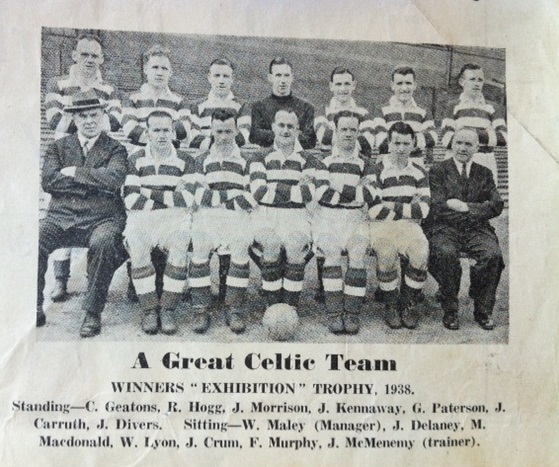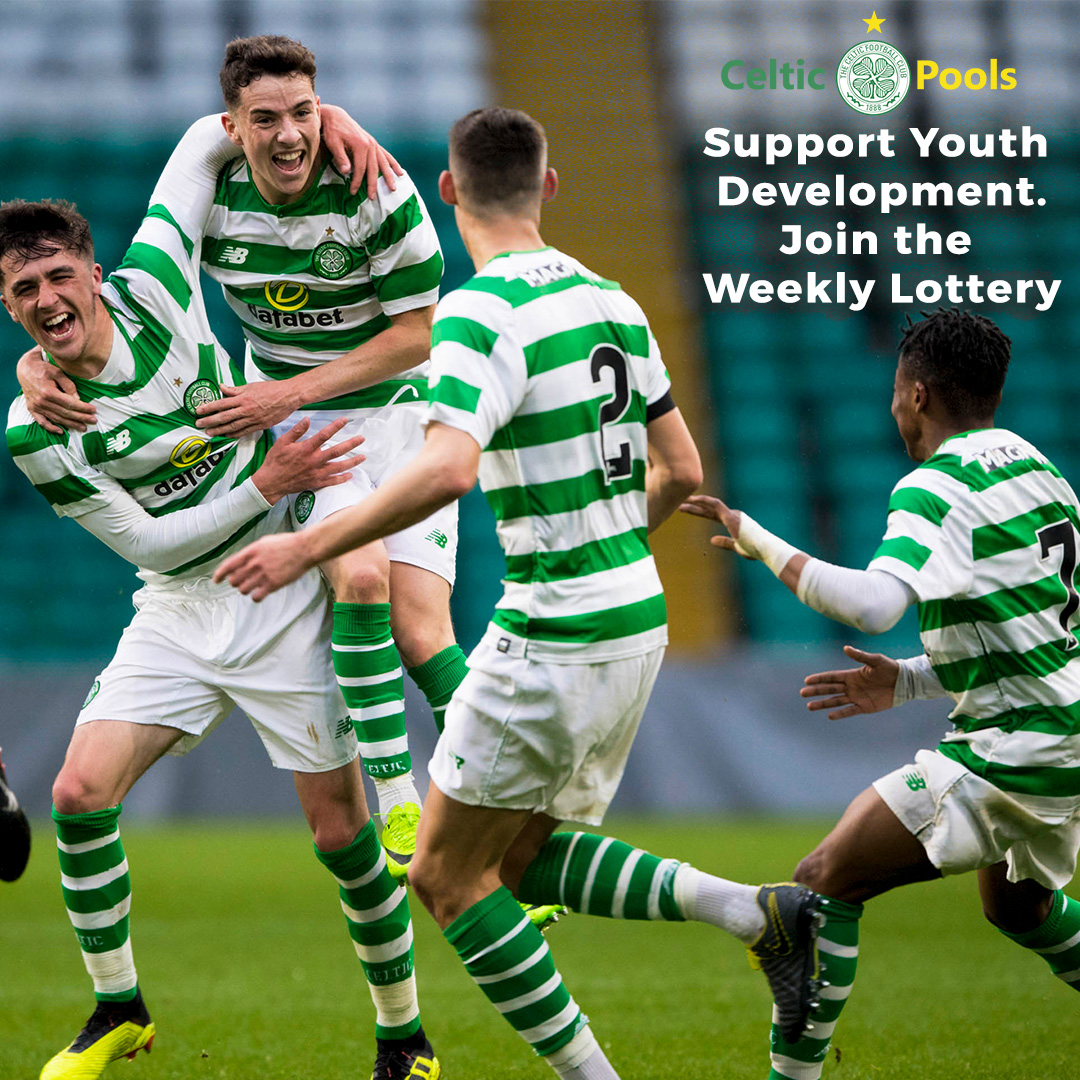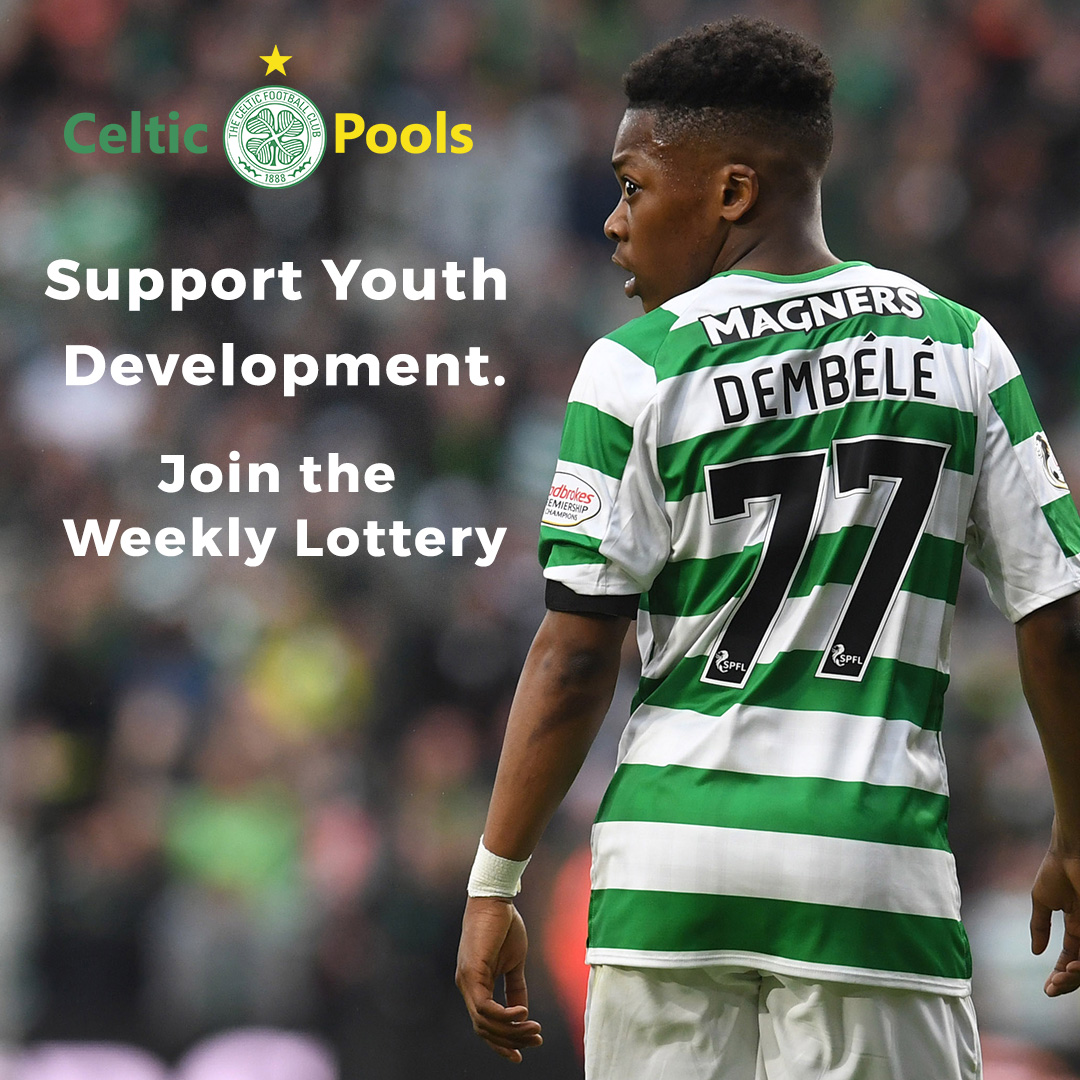A quick check on the Celtic Wiki shows that inside-forward John Watters joined Celtic on a permanent deal on 9 January 1937, the Fifer having signed provisional forms whilst a junior player at St Roch’s, back in 1935.
Jackie would make his debut in the Hoops in November of the following year, in a League match at Gayfield Park, Arbroath, as a replacement for the aforementioned Malcolm MacDonald, who had been stricken by appendicitis, the only change to the successful Empire Exhibition Cup Final team.
Second-half goals from Chic Geatons and Johnny Crum gave the defending champions a much-needed boost after a three-game spell without a win. Jackie kept his place in an unchanged Celtic side for the following weekend’s visit of Hibernian, netting a double, his first goals for the club, the Bhoys’ first and third in a thrilling 5-4 victory, secured thanks to a last-gasp winner from left-winger Frank Murphy.
Watters continued to deputise for MacDonald through a disappointing series of December results, scoring his second brace in a 2-2 draw against the previous season’s runners-up, Hearts, at Celtic Park on Hogmanay, this time the Gorgie club equalising at the death.

Two days later, on Monday, 2 January 1939, he played at Ibrox in front of 118,567, the largest-ever recorded League attendance in Britain. Celtic would lose 2-1, Joe Carruth on the scoresheet for a much-changed side, stalwarts Paterson, MacDonald, Crum and Divers all missing from the established line-up. The corresponding fixture of the previous year, on Saturday, 1 January 1938, had seen the record attendance of 92,000 set at Celtic Park, albeit some reports show that figure as ‘only’ 83,500, Celtic beating Rangers 3-0 that fine day.
The fallout from the overcrowding issues at Ibrox would lead to discussions around the requirements of making future such fixtures all-ticket affairs. However, that was the least of Celtic’s problems.
Willie Maley rang the changes for the following day’s home game with Queen’s Park, fielding no fewer than three debutants, goalkeeper John Doherty, centre-half Hugh ‘Teddy’ O’Neill and inside-right Oliver Anderson, plus right-half Bertie Duffy, for his first appearance since September 1937. It didn’t work, Celts beaten 1-0 by a side who had lost all seven of their previous matches, thus continuing the Hoops’ miserable festival period, with just one point gained from four games. Sadly, Watters was involved in the Spiders’ winning goal, thirteen minutes from time, his clumsy challenge on Christie conceding a needless free-kick from which the same player scored. This meant that the Bhoys had dropped to third spot in the race to retain their crown, with leaders Rangers now nine points clear of Hearts at the top.
The slump continued at the weekend, with a 4-0 hammering by bottom-dogs Raith Rovers in Kirkcaldy, the Fife side winning their first game since November, despite the return of Joe Kennoway, Willie Lyon and Malcolm MacDonald to the team. Jimmy Delaney and Joe Carruth dropped out, meaning a shuffle of the forward line, with Matt Lynch and Jimmy Birrell introduced on the flanks, Jackie Watters and Frank Murphy moving inside to accommodate the latter. But for the performance of the big Canadian in Celtic’s goal, it could have been an even heavier defeat. This would turn out to be Bertie Duffy’s last appearance in the Hoops. He would join the RAF the following year, following the outbreak of war.
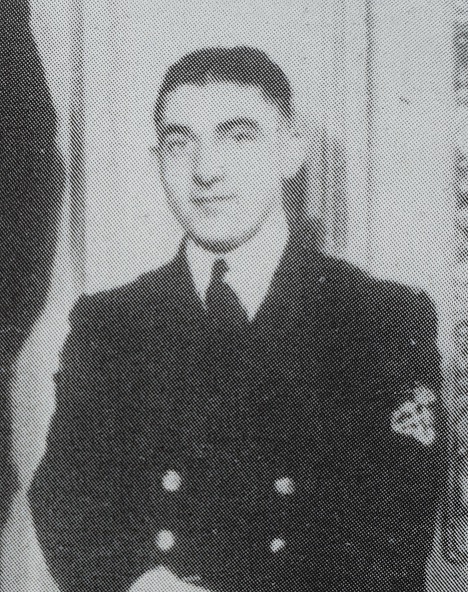
With the League gone, Celtic’s focus would turn to the Scottish Cup, the next fixture being an away tie against amateur side, Burntisland Shipyard, in the first round, on Saturday, 21 January 1939. Johnny Crum returned to the side and he opened the scoring, in front of 3,000 at Kirkton Park.
A see-saw first half saw the Celts lead three times, Delaney and MacDonald with the others, the locals replying twice to have the sides turning around at 3-2. They would then level again in the second period, before Celts powered away with the tie, Murphy making it 4-3 then MacDonald completing his hat-trick. Further goals in the last fifteen minutes from Watters and Crum would see the visitors finally declare at 8-3.
Unbeknown to him at that time, that strike in eastern Fife would be Jackie Watters’ last for the club. John Divers would replace him for the midweek visit of Albion Rovers, the inside-forward scoring all four Hoops goals in the process past former Motherwell goalkeeper, Allan McClory, the man who had played so well against Celtic in the Scottish Cup Finals of both 1931 and 1933, as the Empire Exhibition Cup Final forward-line celebrated getting back together again with a comfortable 4-1 win.
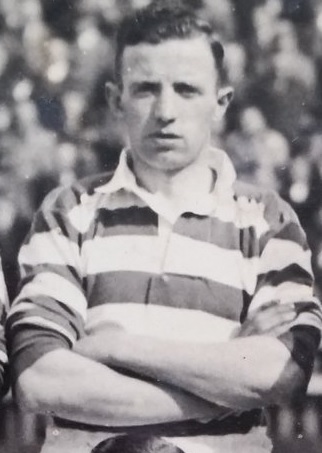
Divers would retain his place for the remainder of that 1938/39 season, with Watters failing to make another appearance. This would include the dramatic clashes with old foes, Hearts in the third round of the Scottish Cup. The Edinburgh side had created, surely, an unique record, by scoring fourteen goals in each of their first two ties, Penicuik Athletic (14-2) and Elgin City (14-1), the unfortunate lambs to the slaughter.
The third round would be a different matter entirely. The first match took place at Tynecastle on Saturday, 18 February 1939, in front of an incredible crowd of 50,000, the first all-ticket match at the Gorgie ground.
They saw Celts make a stunning start, with goals from Jimmy Delaney and Malcolm MacDonald in the first four minutes, before Fred Warren reduced the deficit by half-time. Then, with just seconds remaining, Archie Garrett made it 2-2, just as he had in the Parkhead League fixture at Hogmanay.
The replay four days later saw another huge attendance, this time just under 81,000 at Celtic Park, a new record for a midweek match in Britain outwith Cup Final replays, with many thousands more locked out.
Warren opened the scoring for the visitors on the half-hour before Divers emerged as the hero, equalising ten minutes later then bundling home the winner five minutes from the end of extra-time, with Hearts protesting that the ball had not crossed the line. Celtic would be knocked out in the next round at Fir Park, Motherwell, in turn, losing their third cup final of the decade at Hampden, as Clyde claimed their first success in the competition.
The Bully Wee had disposed of Rangers by 4-1 at Ibrox on the day of that Tynecastle match, centre-forward Willie Martin creating his own piece of history by scoring all four. With the competition suspended during the Second World War, Clyde would claim the record of the club retaining the famous old trophy for the longest duration, until Aberdeen’s win of April 1947.
The Shawfield side would also feature in another war-related piece of trivia at the beginning of the following season, 1939/40. The new Scottish Cup-holders travelled to play Celtic in the fifth round of League fixtures on Saturday, 2 September 1939, a John Divers goal two minutes into the second half proving to be the only score of the game.
The next day, Britain and France declared war on Germany, and the League would subsequently be suspended until August 1945, Celts having won three and lost two of their five games, both defeats by 3-1 to Aberdeen.
In its place in the interim, would be wartime Scottish Regional League matches, which were not recognised in official statistics. Although he had played in all five matches at the beginning of this season, an injury sustained in the Clyde game would rule Divers out of first-team action until December.
Thus, Jackie Watters would appear in the inaugural SRL Western Division fixture played by Celtic, a 4-3 home defeat by Hamilton Academical on Saturday, 21 October 1939.
Jackie would then slip back into first-team exile before re-appearing the following March for his final run in the side. By this time, the legendary Maley had retired as Celtic manager, voluntarily or otherwise, and former skipper Jimmy McStay was now in charge of team affairs. Watters would feature in eight of the remaining SRL games between March and May 1940, Celtic winning three and losing four, with one drawn.
Sadly, the only consistency in that run would be his failure to score in any one of these matches. Jackie’s last game for Celtic was a 2-1 defeat by St Mirren at Love Street on Saturday, 4 May 1940, by which time only full-back Bobby Hogg, the immortal half-back line of Chic Geatons, Willie Lyon and George Paterson, and inside-forwards Malcolm MacDonald and John Divers remained from the side which had lifted the Empire Exhibition trophy less than two years earlier. Matt Lynch scored the Celtic goal, as the Bhoys finished an embarrassing thirteenth in a sixteen-club League.
In the summer of 1940, as he approached his 21st birthday, Jackie joined the war effort, serving in the Royal Navy as a medic until his demob in 1947. Formally freed by Celtic in April of that year, he moved to Airdrieonians in September, his first season there ending in the disappointment of relegation, four points below his former club Celtic, saved following Jock Weir’s hat-trick at Dundee, referred to earlier.
They would be promoted back to Division A in April 1950, after two seasons in the second tier, and would remain there until the end of 1953/54, as his old club were re-emerging from their post-war wilderness to claim their first League and Scottish Cup double since the prime of Maley, forty years earlier, building on the platform of the Coronation Cup win the previous May. His contemporaries at Broomfield would include Bobby Flavell, Ian McMillan and his old Celtic teammate, Oliver Anderson.
The final part of Jackie’s career involved another club with Empire Exhibition links, Sunderland, who had faced Celtic in the first game of the 1938 competition. In 1955, as a qualified physiotherapist, he joined the Roker Park outfit, commencing a love affair that would last the best part of thirty years.

By far the highlight of that time, was Sunderland’s giant-killing act of Wembley 1973, when the Black Cats defied the might of Don Revie’s Leeds United to win the FA Cup, thanks to a goal from former Raith Rovers star and future Aberdeen manager, Ian Porterfield and a stunning save from keeper Jim Montgomery from a point-blank Peter Lorimer effort.
Manager Bob Stokoe wasn’t the only Rokerite dancing a jig of joy on the lush turf afterwards. Sunderland afficionados recall the bespectacled physio, by now in his mid-fifties, doing likewise, with his white coat over his club suit. Watters could claim a key role in that success. It was his direct intervention – turning up at the player’s house with one of his schoolteachers, following a four-week trial at Turf Moor – which convinced the 15-year-old Jim Montgomery to choose Sunderland over Burnley, at that time one of the powerhouses of English football.
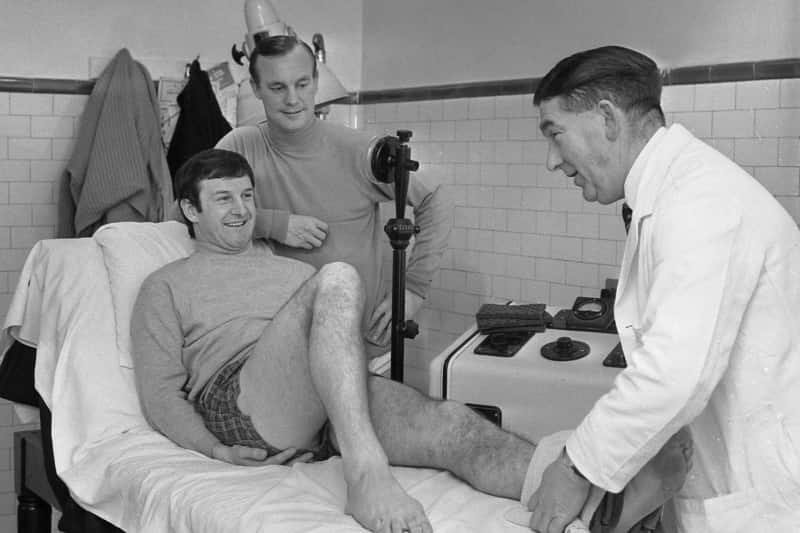
Watters would work with all of the Roker Park greats over that period, Charlie Hurley – a boyhood favourite of former Celtic boss, Martin O’Neill, Billy Bingham – who managed O’Neill at the World Cup in Spain in 1982, and Brian Clough, who was of course the Derry man’s club manager at Nottingham Forest, as the East Midlands side won two European Cups at the beginning of the 80’s.
Jackie – or Johnny as he was referred to in England’s north-east – retired from his physiotherapist’s role at Sunderland a decade after that final, a much loved and respected figure in the city. He died in his sleep on 12 August 2012, just shy of his 93rd birthday. A grand old life, well lived, as they say.
So now that we know who the players are, the question remains as to what the significance is of this line-up and why did the autographs turn up in the Star Hotel in Kingussie, in the Scottish Highlands, as Paddy’s family have assured him is the case?
When? By a stunning Ruth Rendell CSC process of elimination, we can date the occasion as sometime after the beginning of the 1937/38 season, which is actually stated at the top of the page, and 15 November 1937, when Willie Buchan left for Blackpool. It is perhaps also reasonable to suggest that it happened prior to 16 October 1937, when Jimmy McGrory played his last match for Celtic, although he remained at the club until December of that year.
Why? The most obvious answer is that the club stayed over en route to or from a game in the north of Scotland. However, this line-up, as far as I can tell, never played together, unless in some unofficial friendly or charity match, which I have been unable to track down. The two most likely options for this scenario are Celtic’s visits to Aberdeen, on Saturday, 25 September 1937, and to Arbroath, two weeks later. For both of these games, the forward-line is a perfect fit, however, neither Jock Morrison nor Chic Geatons featured in the 1-1 draw at Pittodrie, whilst both Willie Lyon and Alex Millar did but do not appear on the sheet.
Likewise, for the 2-0 defeat at Gayfield, Geatons remained an absentee with Malcolm MacDonald at right-half whilst Tom Doyle deputised for Joe Kennoway between the sticks. I have another possible theory, however, I’ll leave you thinking in the interim, in the hope that someone comes up with the goods.
The second part of this article will look at the other autograph sheet shown at the start and also shared by Paddy on Twitter.
Thanks, as always, to the Celtic Wiki, a wonderful source of reference information.
Hail Hail!
Matt Corr
Follow Matt on Twitter @Boola_vogue
Getting too old for this. A night which looked like it could be costly ends with us a further point clear. Mental 🍀 pic.twitter.com/gTcwyVz5Fy
— Matt Corr (@Boola_vogue) March 4, 2020
Tom Grant’s Celtic Park Photographs, A Brand New Stadium | The Celtic Star https://t.co/HvqNo22Aw2
— The Celtic Star Editor (@CelticStarMag) March 5, 2020
Sandman’s 9-In-A-Row Champions-In-Waiting Ratings – Celtic at Living Nightmares | The Celtic Star https://t.co/6swfbNIiN3
— The Celtic Star Editor (@CelticStarMag) March 5, 2020
Support Celtic Youth Development
Help raise money for Celtic Youth Development by joining the £1 weekly lottery and you could win up to £25,000 – just click on any one of the photographs below to join. Lots of our readers have already done so and they’re now doing their bit to help fund Celtic Youth Development that can deliver the stars of tomorrow and beyond. And you might even win a few bob too! And a special thank you to all The Celtic Star readers who have already signed up and are now supporting youth development to give us the Celtic Stars of the future…
